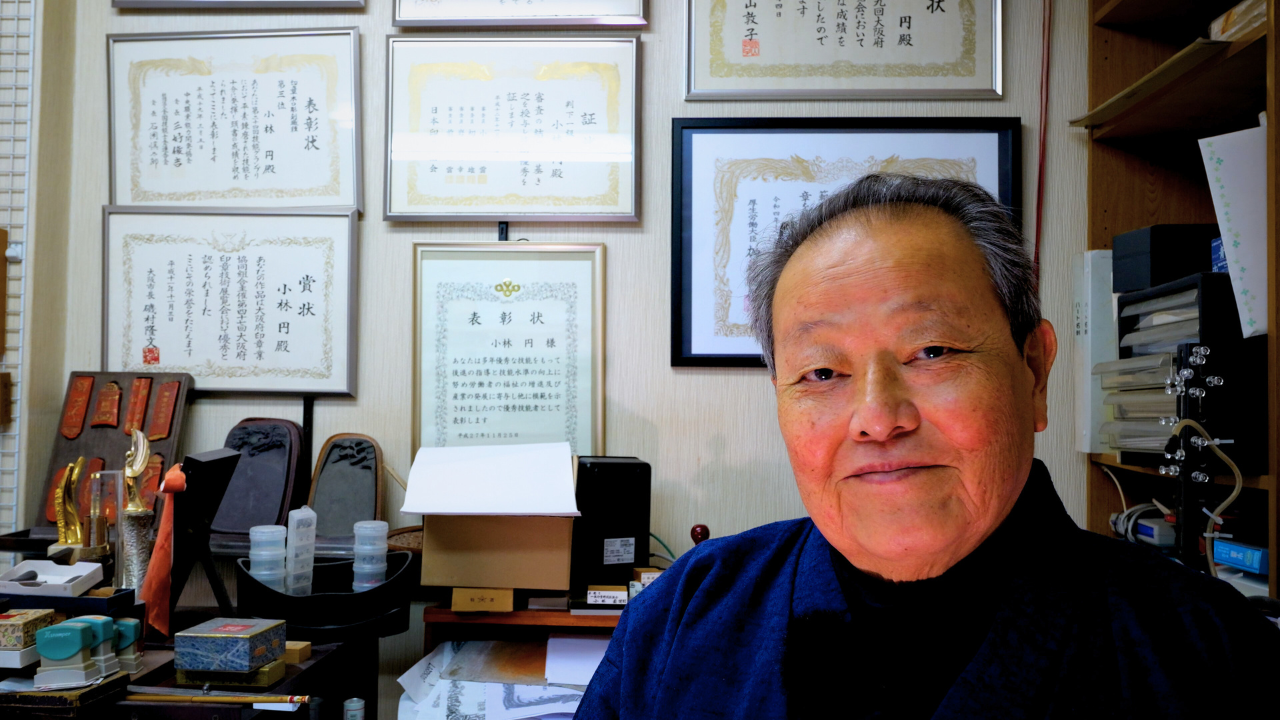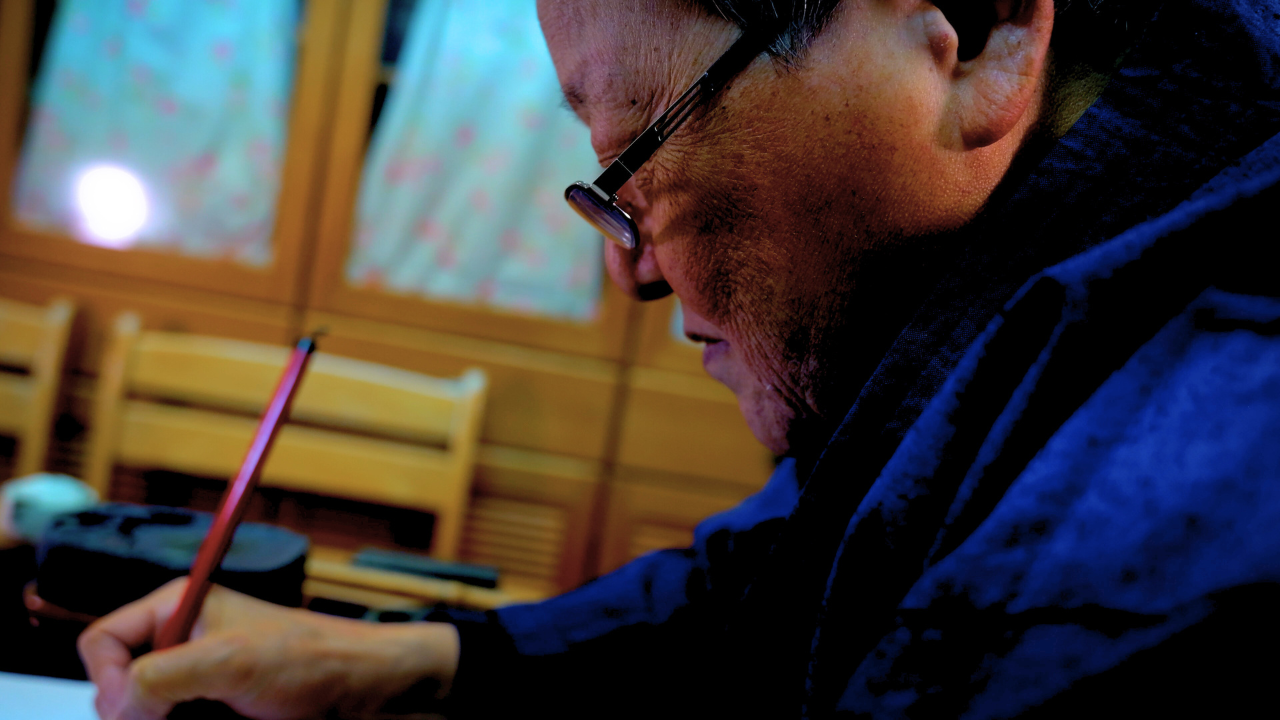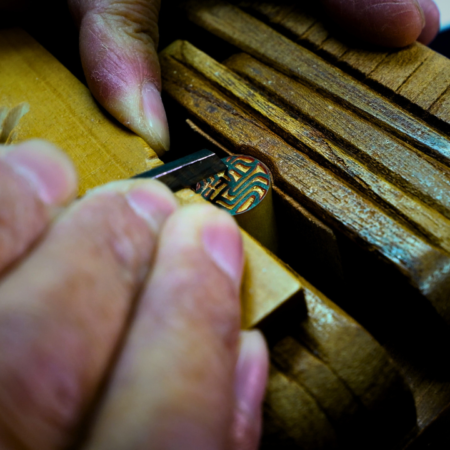Captivating the World with Craftsmanship
As traditional Japanese techniques become increasingly mechanized, there remains a craftsman who continues to create beautiful hand-crafted seals. Madoka Kobayashi of Kobayashi Yushindo is one of the few artisans who insists on handwritten and hand-carved techniques.
Kobayashi steps beyond the bounds of traditional calligraphy and into the world of seal engraving, even creating his own original script called Kyōmadoka. Through his work, he beautifully embodies the balance between preserving tradition and embracing innovation.
This article delves into his unwavering dedication as a craftsman, the future of seal culture, and his challenge to bring Japanese artistry to the world.
Connection and Trust with Clients Come First
When hearing a client’s name, Kobayashi immediately sketches out several script styles—such as tensho (seal script) or inshotai (seal-style script)—to visually convey what the final product might look like, to make an effort to ensure they are satisfied.
In the past, some clients have brought in seals they had used for years, requesting similar replacements. Kobayashi never denies such requests—instead, he offers suggestions tailored to each individual, building genuine relationships of trust.
“We’re the ones who should be thankful,” he says, “but instead, it’s often the customers who say, ‘Wow, this turned out great—thank you.’ That’s happened many times.”
He also actively participates in local events and community activities, which helps him connect with residents and leads to new customer encounters.

Uncompromising Commitment to Handwriting and Hand-Carving—Beyond What Machines Can Reproduce
Today, most seal shops design their products on computers and produce them with machines. However, Kobayashi stays fully analog—drawing each character by hand and showcasing the full extent of his craftsmanship.
“I guess I’m a bit old-fashioned,” he says with a laugh. “I don’t use computers at all—I rely solely on my hand-drawn designs. But I think that’s actually what sets me apart and makes my work appealing.”
“There’s a warmth in handwritten characters that computer fonts simply can’t replicate.”
The unique texture and charm that only handcrafting can produce—this is the essence of his technique. He even offers fully hand-carved seals upon request, putting care and precision into every piece. As the number of such skilled artisans declines, demand for his handcrafted work has actually been increasing.

Bringing Japanese Culture to the World—Unlocking New Possibilities for Seals
Kobayashi remarks, “These days, it seems that it’s actually people from overseas who truly recognize the value of Japanese culture and are willing to pay for it.”
Traditionally, Japan’s seal culture—especially the system of jitsuin (registered personal seals)—has existed only in Japan, making it difficult to expand into international markets. However, Kobayashi is exploring ways to share Japan’s unique written culture globally by introducing the idea of “expressing foreign names in kanji.”
For example, he creates designs using kanji characters to phonetically represent foreign names on items like sweatshirts or T-shirts—transforming “Michael” into 舞蹴, or “Emily” into 絵美里. Through this creative use of kanji, he presents familiar names in a way that highlights the beauty and depth of the Japanese language.
Beyond seals, Kobayashi is also working on expanding into international art and collaboration products by applying traditional Japanese techniques like rakkan (signature stamps) and tenkoku (seal engraving). Through these efforts, he is actively sharing Japanese culture with the world.

Conclusion
While remaining committed to the art of handwriting and hand-carving, Kobayashi continues to take on new challenges to share Japan’s written culture with the world.
Through our interview with Kobayashi Yushindo, we were deeply moved by his sincerity toward his clients, his profound love for Japanese culture and script, and his strong desire to spread that culture beyond Japan.
His approach—preserving tradition while constantly exploring new possibilities, and using his craft to convey the aesthetics of Japan globally—is sure to inspire many people.

